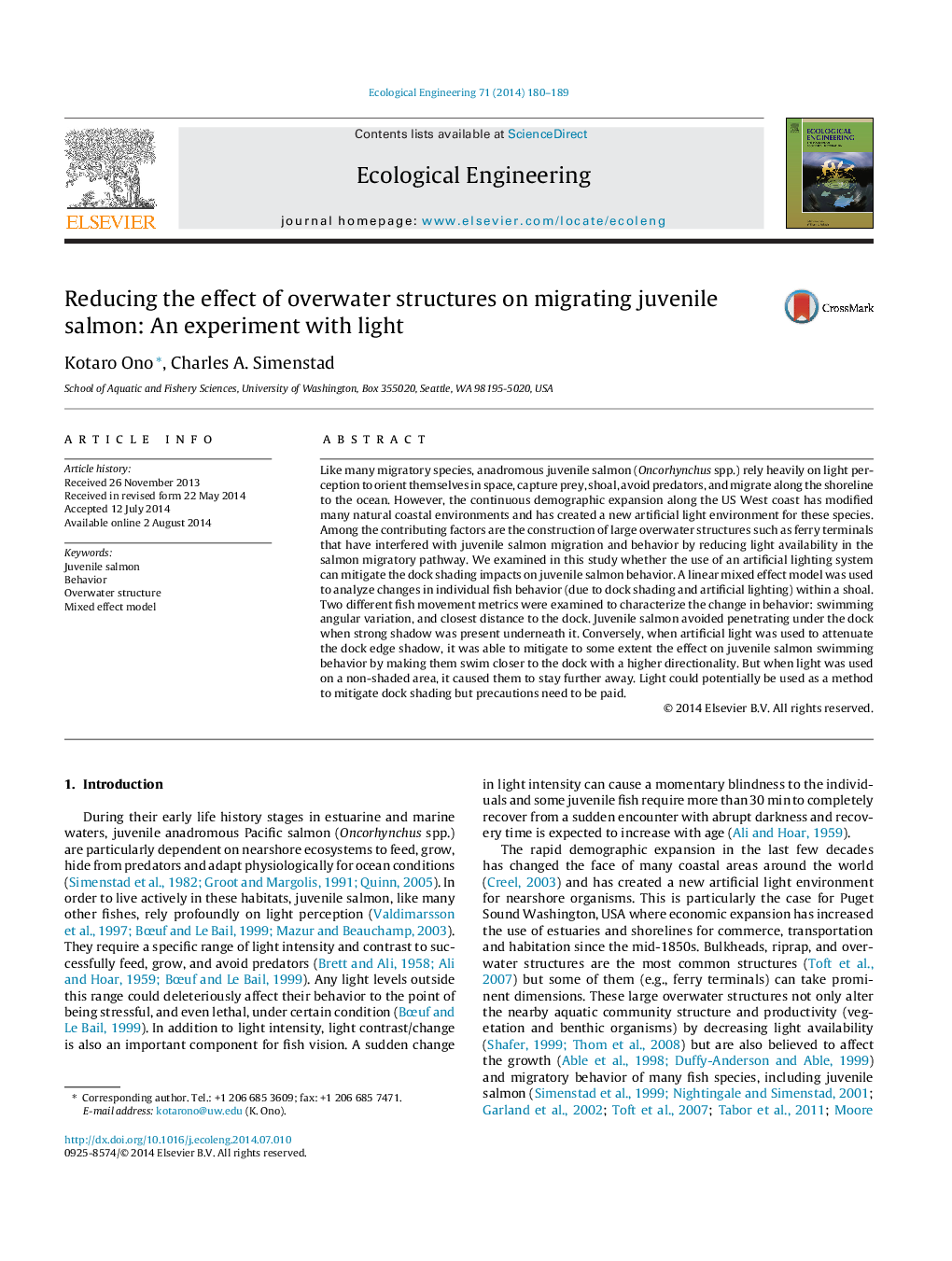| Article ID | Journal | Published Year | Pages | File Type |
|---|---|---|---|---|
| 4389153 | Ecological Engineering | 2014 | 10 Pages |
Like many migratory species, anadromous juvenile salmon (Oncorhynchus spp.) rely heavily on light perception to orient themselves in space, capture prey, shoal, avoid predators, and migrate along the shoreline to the ocean. However, the continuous demographic expansion along the US West coast has modified many natural coastal environments and has created a new artificial light environment for these species. Among the contributing factors are the construction of large overwater structures such as ferry terminals that have interfered with juvenile salmon migration and behavior by reducing light availability in the salmon migratory pathway. We examined in this study whether the use of an artificial lighting system can mitigate the dock shading impacts on juvenile salmon behavior. A linear mixed effect model was used to analyze changes in individual fish behavior (due to dock shading and artificial lighting) within a shoal. Two different fish movement metrics were examined to characterize the change in behavior: swimming angular variation, and closest distance to the dock. Juvenile salmon avoided penetrating under the dock when strong shadow was present underneath it. Conversely, when artificial light was used to attenuate the dock edge shadow, it was able to mitigate to some extent the effect on juvenile salmon swimming behavior by making them swim closer to the dock with a higher directionality. But when light was used on a non-shaded area, it caused them to stay further away. Light could potentially be used as a method to mitigate dock shading but precautions need to be paid.
